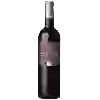
Domaine NaïsCoteaux d'Aix-en-Provence Blanc
This wine generally goes well with
Details and technical informations about Domaine Naïs's Coteaux d'Aix-en-Provence Blanc.
Discover the grape variety: Clairette
Clairette rosé is a grape variety that originated in France (Provence). It produces a variety of grape used for wine making. However, it can also be found on our tables! Note that this grape variety can also be used for the elaboration of eaux de vie. This variety of vine is characterized by medium to large bunches of grapes of medium size. Clairette rosé can be found in several vineyards: South-West, Cognac, Bordeaux, Rhône Valley, Provence & Corsica, Languedoc & Roussillon, Loire Valley, Savoie & Bugey, Beaujolais, Armagnac.
Informations about the Domaine Naïs
The Domaine Naïs is one of of the world's greatest estates. It offers 14 wines for sale in the of Coteaux d'Aix-en-Provence to come and discover on site or to buy online.
The wine region of Coteaux d'Aix-en-Provence
Côteaux d'Aix-en-Provence is one of the main French appellations in the Provence wine region, located in the extreme southeast of the country. It is the second largest appellation in the region, with about 4,000 hectares North and west of Aix-en-Provence - the town from which it takes its name. The area also bears the tiny title of AOCPalette. The Côteaux d'Aix-en-Provence appellation was first introduced as a VDQS in 1956, having been informally known as Côteaux du Roy René (René d'Anjou being a 15th century French king famous for his love of wine and the Vine).
The wine region of Provence
Provence is a wine region in the far southeast of France, best known for the quality (and quantity) of its rosé wines and for its Warm, mild Climate. The modernization that is taking place in many of the traditional wine regions of southern France has not yet taken place to the same extent in Provence, but there are Clear signs of change. The region's Grape varieties, in particular, have come under scrutiny in recent decades. Traditional varieties such as Carignan, Barbaroux (Barbarossa from Sardinia) and Calitor are being replaced by more commercially viable varieties such as Grenache, Syrah and even Cabernet Sauvignon.
The word of the wine: Sulphating
Treatment, formerly practiced with copper sulfate, applied to the vine to prevent cryptogamic diseases.














